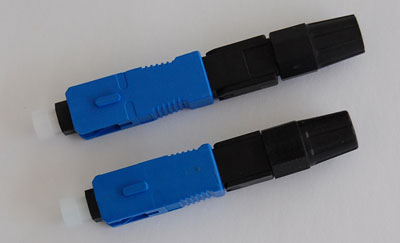-

- Sopto Home
-

- Special Topic
-

- Fiber Optics knowledge
-

- Types of Fiber Joints
Fiber Optics knowledge
- Maintained Methods of Fusion Splicer Parts
- How to Use the Fiber Optic Cleaver?
- What are Fixed Attenuators & Variable Attenuators?
- Deployable Fiber Optic Systems for Harsh Mining Environments
- Developing Miniature Fiber Optic Cable Has Become the Trend
- Fiber Optic Cleaning Procedures
- 6 Steps to Selecting a Fiber Optic Cable
- Signal Attenuation Introduction
- How Fiber Transmission Works?
SOPTO Special Topic
Certificate



Guarantee
Except products belongs to Bargain Shop section, all products are warranted by SOPTO only to purchasers for resale or for use in business or original equipment manufacturer, against defects in workmanship or materials under normal use (consumables, normal tear and wear excluded) for one year after date of purchase from SOPTO, unless otherwise stated...
Return Policies
Defective products will be accepted for exchange, at our discretion, within 14 days from receipt. Buyer might be requested to return the defective products to SOPTO for verification or authorized service location, as SOPTO designated, shipping costs prepaid. .....
Applications
Fiber Optis can be used in so many fields:
Data Storage Equipment
Interconnects,Networking
Gigabit Ethernet
FTTx, HDTV,CATV
Aerospace & Avionics
Data Transfer Tests
Network Equipment
Broadcast Automotive
Electronics,Sensing
Oil & Gas, Imaging
Outside Plant,Central Office
Harsh Environment
Data Transmission
Illumination,Institutions
Ship to Shore,Education
Simulation,Military,Space
Unmanned Aerial Vehicles
Semiconductor Equipment
Diagnostics & Troubleshooting
Premise Networks Carrier Networks
Independent Telecommunication Providers
SOPTO Products
- Fiber Optic Transceiver Module
- High Speed Cable
- Fiber Optical Cable
- Fiber Optical Patch Cords
- Splitter CWDM DWDM
- PON Solution
- FTTH Box ODF Closure
- PCI-E Network Card
- Network Cables
- Fiber Optical Adapter
- Fiber Optical Attenuator
- Fiber Media Converter
- PDH Multiplexers
- Protocol Converter
- Digital Video Multiplexer
- Fiber Optical Tools
- Compatible
Performance Feature
Fiber Optics knowledge
Recommended


Types of Fiber Joints
Optical fibers can be joined together, such that light is efficiently transferred from one fiber to another. There are various possibilities:
- Mechanical splicing means that two fiber ends are tightly hold together with some mechanical means. That is usually done for permanent connections, but it may be possible to dismantle a splice without spoiling the fiber ends.
- Another technique is fusion splicing, where the fibers are fused together, e.g. using an electrical arc. This leads to particularly low insertion loss and high return loss, if the two fiber cores are similar.
- For non-permanent connections, one can also use fiber connectors (see below).
.png)
Figure 1 Microscope imagine of a fusion splice
Figure 1 is the microscope imagine of a fusion splice between a photonic crystal fiber (PCF, left side) and a conventional fiber (right side). The hole pattern of the PCF can be seen.
Fiber connectors are often used at the ends of fiber cables in order to provide non-permanent connections between fiber-coupled devices. In principle, they are used in a similar manner as electrical connectors. However, their use typically requires some more care, because fiber ends are relatively sensitive, and because fiber connectors are not always easy to attach to a fiber end.
Note that even a tiny particle of dust on the fiber core can cause substantial losses. (Therefore, one often protects a fiber connector with a dust cap during times when it is not plugged in.) Also, small imperfections of a fiber end may lead to a small air gap between the fiber ends, which cause reflection losses.
A great variety of fiber connectors has been developed, e.g. for applications in optical fiber communications. Some common types are ST, FC, SC and LC connectors. The different connectors types differ in various aspects, e.g. in terms of cost, size, ease of use, insertion loss and return loss, suitable fiber size, allowed number of mating cycles, suitability for multimode, single-mode and polarization-maintaining fibers and various other details.
Claim: The info above is reprinted from:
http://www.rp-photonics.com/passive_fiber_optics6.html
Sopto supplies high quality fiber optics and connectors. For the newest quotes, please contact a Sopto representative by calling 86-755-36946668, or by sending an email to info@sopto.com. For more info, please browse our website.





-180x180.JPG)

